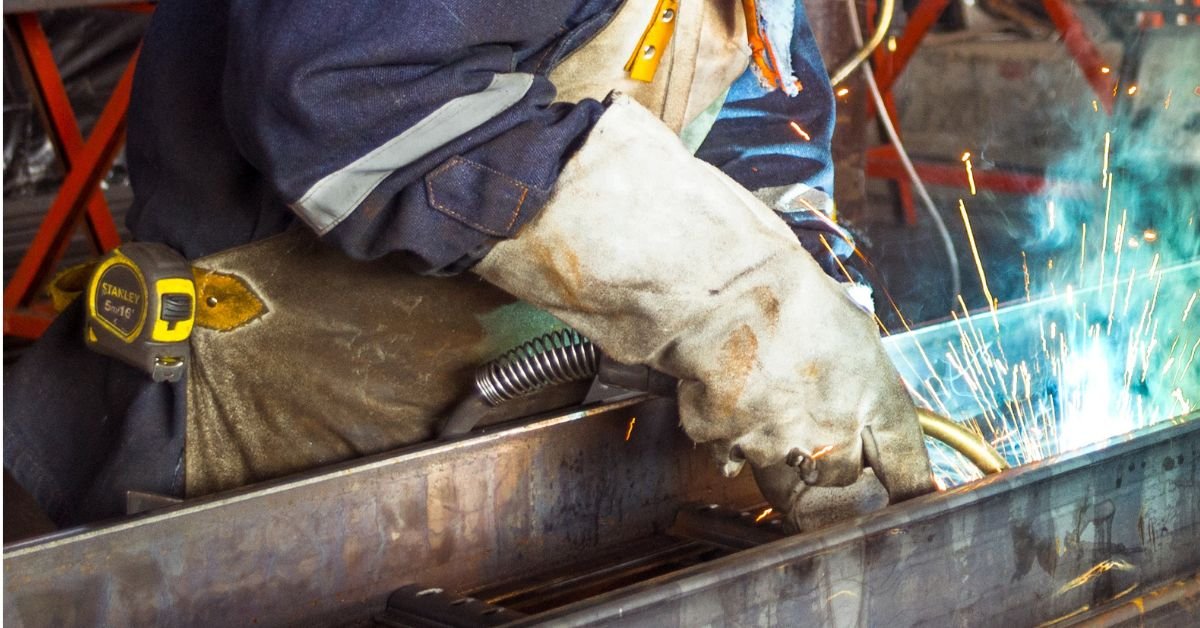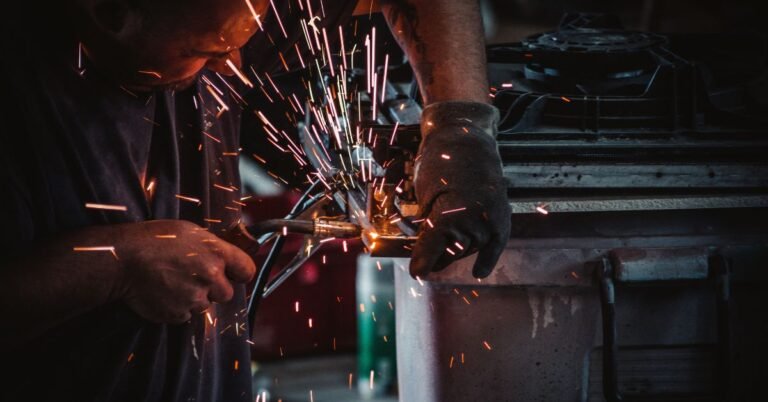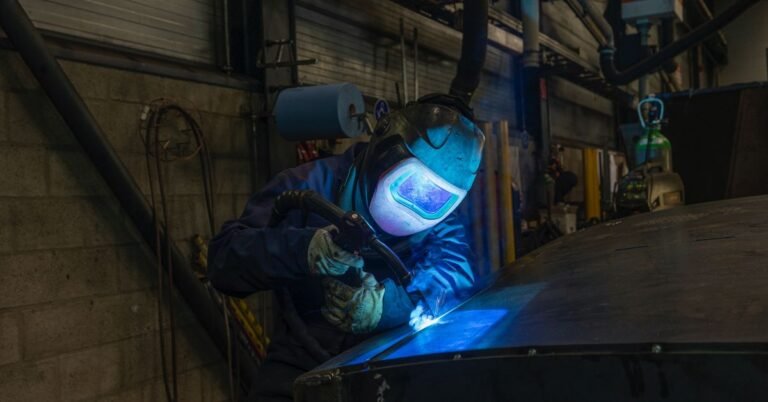Unveiling the Fascinating World of Welding: 15 Remarkable Facts
Welding, an age-old craft that has forged the backbone of countless industries, continues to play a pivotal role in our modern world. With its origins dating back to 1000 B.C., welding has evolved over the centuries, shaping everything from ancient tools to cutting-edge technology. In this blog, we delve into the intriguing world of welding and uncover 15 captivating facts that illuminate its rich history and diverse applications.
1. Ancient Beginnings
Welding’s journey began millennia ago, with its earliest tools appearing in 1000 B.C. During the Middle Ages, blacksmiths pioneered hammering techniques to create welded metal products, setting the stage for modern welding practices.
2. The Art of Fusion
Welding, at its core, involves fusing metal sections by subjecting them to intense heat until they melt and subsequently cool to form a solid bond. This fundamental process finds extensive use across various industries, notably in steel construction, where it forges robust and reliable structures.
3. Wet vs. Dry Welding
Wet welding, also known as hyperbaric welding, emerged in the early 1930s. It operates at elevated pressures, often underwater, using shielded metal arc welding techniques, with the welder submerged, including the electrode. Conversely, dry welding takes place in high-pressure environments with the weld site insulated from surrounding water.
4. Speed on Water
The SS Robert E Peary, a Liberty ship constructed during WWII, earned the distinction of being the fastest ship ever built. Remarkably, it was assembled in just four days, 15 hours, and 27 minutes, thanks to advances and innovations in welding techniques.
5. The Heat of Gas Welding
Gas welding, also known as oxyacetylene welding, reigns as the welding process with the highest temperature. This method, which employs a blend of fuel gases and oxygen, can reach scorching temperatures of nearly 3,500 degrees Celsius, making it indispensable in various applications.
6. Versatility Across Industries
Welding is a ubiquitous presence across numerous industries. From architectural and structural metals manufacturing to motor vehicle production, mining, and agriculture, welding plays a pivotal role. The aerospace and shipbuilding sectors also heavily rely on welding for their intricate needs.
7. The Enigmatic Fume Plume
Every welding enthusiast is familiar with the term “fume plume.” This refers to the smoke that rises when welding materials together, created by the interplay of heat and sparks in the welded area.
8. Cold Welding’s Intriguing Bond
Cold welding, or contact welding, is a process where two pieces of metal join without the need for heat or fusion. The metallic bonds between atoms bridge the gap between the metals, creating an immediate and solid bond.
9. Welding’s Healing Touch
Welding extends its reach into the medical industry, contributing significantly to advances in healthcare. Not only does it supply the tools and equipment required by healthcare professionals, but it also offers the potential for medical-grade materials like stainless steel, cobalt, and titanium.
10. A World Hungry for Welding
Welding products are integral to our daily lives, touching everything from transportation to the buildings and structures that surround us. This demand creates a vast array of opportunities for welders, with the profession’s diversity enabling continuous learning through hands-on experience.
11. Welding’s Giant Leap into Space
In 1969, Soviet cosmonauts Georgi Shonin and Valeri Kubasov ventured into space aboard the Soyuz 6 mission. They made history by experimenting with welding in space, using a tool known as the Vulkan. In the vacuum of space, metal automatically bonds through cold welding due to the absence of oxidation.
12. Robots Take the Welding Reins
In 1962, a groundbreaking moment occurred in the world of welding with the introduction of the ‘Unimation 001’ robot by George Devol and Joseph Engelberger. Weighing over two tons, this robotic marvel executed tasks with precision, particularly spot welds, revolutionizing automotive manufacturing and marking the birth of industrial welding robots.
13. Advances in Environmental Responsibility
While welding processes have historically posed environmental challenges due to their energy demands and emissions, advancements in technology have led to more eco-friendly methods. Energy-efficient welding equipment and cleaner welding gases now contribute to reducing the carbon footprint of welding, aligning it with sustainable practices.
The world of welding is as dynamic as it is historical, constantly adapting to meet the ever-evolving needs of our society. From shipbuilding records to space exploration and artistry, welding continues to shape our world in fascinating ways. Whether you’re a seasoned welder or simply fascinated by the craft, these facts offer a glimpse into the remarkable world of welding.
11. Welding’s Crucial Role in Art and Sculpture
Beyond its industrial applications, welding has found its place in the world of art and sculpture. Artists and sculptors leverage welding techniques to create intricate, expressive, and durable metal works. The versatility of welding allows artists to shape metal into captivating forms, resulting in stunning sculptures, installations, and functional art pieces.
12. Precision Welding in Automotive Racing
Precision welding is paramount in the world of automotive racing. Welders play a critical role in fabricating lightweight yet incredibly strong chassis and components that enhance a vehicle’s performance. From Formula 1 to off-road racing, welding experts contribute to creating vehicles capable of withstanding high speeds, harsh conditions, and challenging terrains.
13. Environmental Impact of Welding
Large-scale industrial welding processes have historically raised environmental concerns due to their energy consumption and emissions. However, ongoing advancements in welding technology have led to more environmentally friendly practices. Energy-efficient welding equipment and the use of cleaner welding gases have helped reduce the carbon footprint of welding, making it more sustainable.
14. Welding’s Contribution to Space Exploration
In 1969, Soviet cosmonauts Georgi Shonin and Valeri Kubasov made history during the Soyuz 6 mission by experimenting with welding in space. They utilized a tool known as the Vulkan. In the unique environment of space, metals automatically bond through cold welding, as there is no oxidation to hinder the process.
15. The Birth of Industrial Welding Robots
The year 1962 marked a significant milestone in welding with the introduction of the ‘Unimation 001’ robot by George Devol and Joseph Engelberger. Weighing over two tons, this robotic wonder executed tasks with precision, particularly spot welds. Its deployment revolutionized automotive manufacturing and paved the way for the widespread use of industrial welding robots in various industries, enhancing efficiency and precision in welding processes.
These additional facts highlight the diverse and far-reaching impact of welding, from the world of art to space exploration and the automotive industry. Welding continues to evolve, pushing the boundaries of what is possible in metal joining and fabrication.







